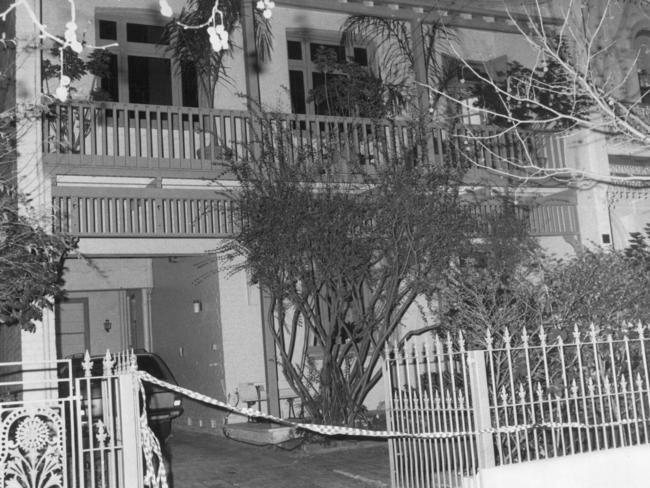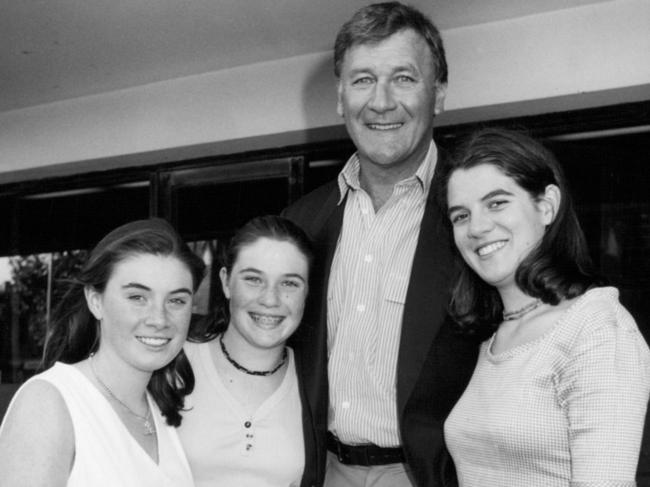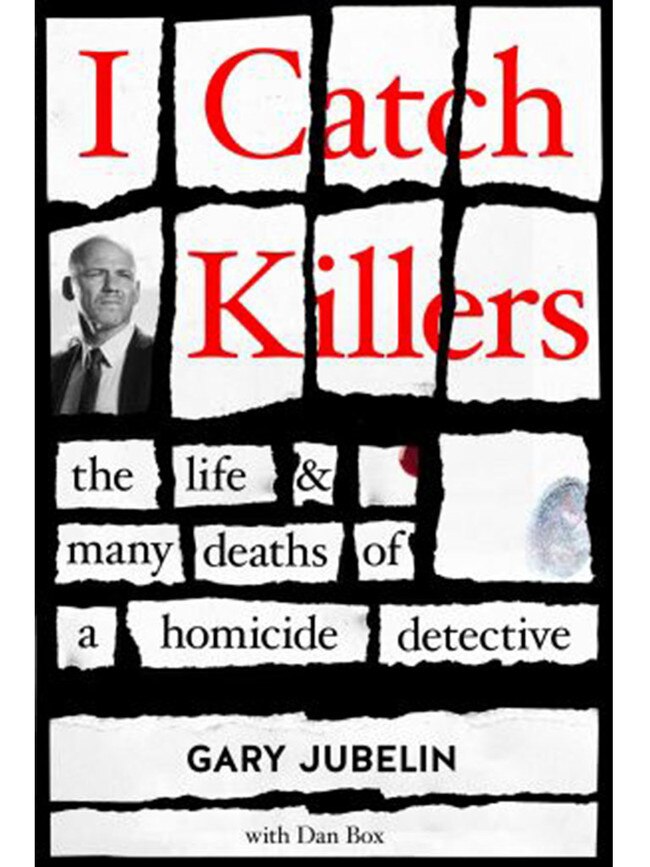I Catch Killers with Gary Jubelin podcast: Cunning plan unravels as killer snares himself
When an armed robber claimed to know the truth about a shocking murder, his story seemed to add up. How cops pulled off a truly inventive con to help expose the lies and real killer is revealed in Gary Jubelin’s I Catch Killers podcast.
Behind the Scenes
Don't miss out on the headlines from Behind the Scenes. Followed categories will be added to My News.
It was the ultimate attempted doublecross with twist: a prisoner who thought he could outsmart the homicide squad.
Ian Lynch was a young homicide detective when he was asked to visit Long Bay prison to interview a convicted armed robber, Christopher Lorenzo, who was claiming he had vital information about an unsolved Queensland assault case.
Lynch dutifully took down his statement – but at the end Lorenzo said he had more to tell.
“Lorenzo said, ‘I might have some information for you about an unsolved homicide in Sydney’,” Lynch reveals in a new podcast episode of I Catch Killers with Gary Jubelin.
“I said, ‘Which one?’ He said, ‘Oh, I can’t tell you too much cause you gotta look after me’,” Lynch says.

It turned out Lorenzo was referring to the 1989 murder of Marguerite Edwards, the Woollahra mother-of-three daughters, whose orthodontist husband Iain found her murdered in their bedroom.
This was the start of one of the most dramatic chapters in the 38-year police career of Lynch, who was also responsible for bringing a notorious serial killer known as the “crossbow butcher” to justice. He led the reinvestigation of one of Australia’s most haunting disappearances; 1970s schoolgirl Trudie Adams and caught notorious paedophile Philip Bell, as well as catching bank-robbers and fraudsters and the toughest job of all: running internal investigations into the cops themselves.
The Marguerite Edwards murder had shocked Sydney and police had no leads.
In 1989, Iain Edwards had returned from work to find Marguerite in their walk-in wardrobe. She had been strangled with one of Iain’s ties and savagely beaten over the head.

Lorenzo wanted a deal before he’d reveal any information to Lynch, so the detective told him to write out what he knew. Lorenzo produced a five-page statement, in which he’d blacked out every significant name, demanding a promise of police help in getting a sentence reduction on his existing convictions before he’d reveal anything.
Lynch commenced negotiations with Lorenzo – on the basis that he would only receive special treatment if his information yielded a conviction in the unsolved murder of Marguerite Edwards.

So Lorenzo started to spill. He claimed he’d been sitting outside the Forresters Hotel in Surry Hills one day, having a quiet drink, when a crook he knew asked if he could borrow Lorenzo’s car (which actually belonged to Lorenzo’s girlfriend) for an armed robbery.
Lorenzo claimed he’d lent the car but the crook returned after the robbery in a state of panic with blood all over his shirt. “Everything’s gone to shit. Drown what’s in the boot of the car,” the crook allegedly told Lorenzo.
Inside the boot was a .45 replica pistol, also covered in blood.
Lorenzo claimed he then searched the car and found a gold bracelet under the seats, which he gave to his girlfriend.
“He said when the police were chasing him relative to the robbery they found the gun and the gun was in fact sitting in the exhibits room at the Sydney Police Centre in Goulburn Street,” Lynch says. “I said OK, and that checked out. It was there.”

Lorenzo claimed he was so suspicious of his friend, the crook, that he took the base plate off the gun’s magazine and hid it in the rear right indicator light of the car.
“We found the car, found the right rear indicator, and there was the base plate. The rear sights of the gun had an imprint that exactly matched marks on the top of the deceased’s skull,” Lynch says, “which indicated the gun had been held by the barrel back hand and used to bludgeon her.”
So far, so good. Lynch identified the crim who Lorenzo had accused of borrowing the car for the robbery, and organised for Lorenzo to meet up with him to see if he could elicit a confession.
For that, they’d have to temporarily let Lorenzo out of jail, to avoid arousing the crim’s suspicions.
The problem was – how to prevent Lorenzo escaping?
MORE FROM THE I CATCH KILLERS PODCAST
Lindt Cafe terror: ‘There’s that f ***ing … shoot him’
‘Cool as a cucumber:’ On the trail of a psychopath
Shark attack that ended a distinguished detective’s career
Detectives came up with a bold plan: they’d put one of Lorenzo’s legs in a plaster cast and tell him he had to pretend to have a broken limb. They also told Lorenzo they’d put a tracking device inside the plaster cast – even though NSW Police at the time didn’t have any tracking devices and, in fact, GPS had not been invented.

“He was led to believe a device had been placed inside the plaster cast and in fact he was there when it was placed in the cast,” Lynch says. “It was just some wires and batteries and stuff. We called it a Spotulator. (We told him) he couldn’t go anywhere because the spotulator would set off. And it worked.”
They set up the meet: Lorenzo and the crim at a hotel, with police listening via surveillance devices.
But the crim didn’t mention the murder. There was no mention of it.
HEAR MORE FROM I CATCH KILLERS
“We were quite frustrated with his efforts and we returned him to jail,” Lynch says.
Lorenzo wasn’t letting it go. He contacted the NSW Police internal affairs division and said he wanted to raise a formal complaint about Lynch and his homicide colleagues, accusing them of reneging on an informant arrangement. They’d promised to help him out, Lorenzo said, and had done nothing.

While that investigation was going on, Lynch and the homicide team returned to the original evidence in Mrs Edwards’ murder.
“On a towel in the bedroom where she was found there was a blood smear. When the blood was examined, they could say it was an unusual mix (of blood types) and it came predominantly from a group of people known as Cape Coloureds from Cape Town in South Africa.
“And Mr Lorenzo was a Cape Coloured from Cape Town in South Africa.”
It was a good clue, but not enough to convict.
Then a stroke of luck: another jail informant came forward to say there was a man in prison boasting about having murdered a woman in Woollahra.

It was, of course, Lorenzo. The Internal Affairs division co-operated with Homicide in setting up covert surveillance inside the jail and recorded Lorenzo making full confessions about the murder, “including some detail that would have only been known to the actual offenders”, Lynch says. It turned out he’d encountered the Edwards family while working as a labourer on some renovations at the home, and had returned to rob the house, only to be surprised by Mrs Edwards. He killed her in a panic.
“He was the offender. And in an effort to have his sentence reduced on armed robbery he gave evidence that led to his own conviction (for murder),” Lynch says.
Listen, subscribe or follow I Catch Killers with Gary Jubelin at truecrimeaustralia.com.au, Apple Podcasts, Spotify, or wherever you get your podcast. Pre-order his book here.
Originally published as I Catch Killers with Gary Jubelin podcast: Cunning plan unravels as killer snares himself



